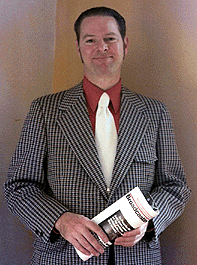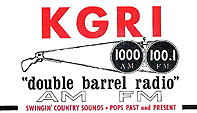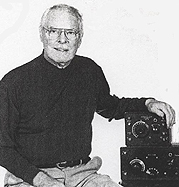
©
2007-2025
Man From Mars Productions
|
George
Freeman
|
 |
|
Q:The second time you stayed with WDRC for six years (1961-67). Did you remain long enough to see the studios move to 750 Main Street? A: Yes, we account executives had to drive around and around downtown location trying to find a vacant parking meter, wasting time and gasoline. Bill Crawford had a huge general manager's office filled with primitive antiques. The entire floor plan was in the design of a "Big D". You'd have to remove the roof of the building to see the Big D but Bill thought it was great. Electrical interference from a dentist's office floors below was an issue. The architect and construction fees and the much higher overhead apparently led to Crawford's demise. It was a power play to give us the prestige of actually, as well as symbolically, looking down on WTIC. Q: You managed WCCC, which I think was owned then by Hartford jeweler Bill Savitt. How involved in the day-to-day was Savitt? A: WCCC was above Savitt Jewelers, but I did not work for Bill. When you got off the elevator the smell of the material used to make dentures made you want to hold your breath until you were down the hall and safely inside the offices and studios. Savitt told me he sold the stations quickly, "like a kettle of fish." My employer was a very interesting guy and the founder of Electra Records, Jac Holzman. I was the general manager. When I met Jac in New York City, mounted on the wall outside his office were the understated, modern aluminum letters "el supremo". I remember he was wearing a Nehru jacket. I was hired to work for Jac by Erny Tannen, a consultant who owned WDMV on the Delmarva Peninsula and WEEZ, Chester, PA. The relationship between Erny and Electra was short lived. |
|
 |
Q:You later became quite an expert on early radio apparatus, including many of the devices invented by Franklin M. Doolittle; had you ever heard of him prior to working at WDRC? A: No. |
|
Q: Did you ever meet Doolittle? A: Yes. I'm guessing it was in 1960. He was in the traffic department office at Blue Hills Avenue. He was dressed very differently from the attire of the day. His clothes were all darkůmaybe even black. Somehow I knew who he was. He was quite distinctive. Something about his hat. He was not gregarious, not outgoing, but matter of fact. He had built this building so he was not uncomfortable surrounded by these strangers. He may have been looking at sales materials when I discovered him. I made it a point not to stare but I knew I was in the presence of someone very special. I've made the acquaintance of his son, John. We've exchanged information many times. John is a former U.S. Navy commander. His e-mail address makes reference to a beached whale. I've treasured our relationship and our correspondence over the last few years. Q: What does George Freeman do today in retirement? A: I married a college classmate from our 1954 Radio Workshop about six years ago (I had been divorced for 28 years). We spend most of our days in her hometown, Tiffin, OH. Janet was the first and only female Seneca County Commissioner serving for 12 years. We formed the Johnson's Island Civil War Roundtable and have 58 members. The name honors the Civil War prison on nearby Lake Erie that housed some 10,000 CSA officers. Janet has a family that has been accepting, supporting and helpful; two daughters, a son and their families including seven grandchildren. I'm teaching the youngest grandchildren a little Russian language.
A few years ago I made contact with Kurt Russell's daughter and wife. Kurt paid for all the provisions at one of our parties on Tunxis Avenue in Bloomfield just so we could party in my log-lined-den. When I was with NAB I briefly checked in with Jim Nettleton in Philadelphia. I'm delighted to read the recent interview with Jim on this same website. Jim and I had been discussing extraterrestrials when the lights went out during the 1965 Northeast Power Blackout (at WIKI I invested thousands of dollars to build an emergency generator backup system because of my experience at WDRC during that blackout). We were at Manny's Delicatessen up the street on Blue Hills Avenue. Manny ran out into the middle of Blue Hills shouting "The Russians are coming! The Russians are coming!" The eerie nature of the experience was sharply enhanced by our conversation re: ET's. Driving home I could see only occasional candle light. John Jaeger was trapped on the 75th floor of the building rented by Buckley-Jaeger and provided phone call descriptions of the situation in New York City to WDRC. John was a former WNEW newsman; his stage name had been George Brooks. He must have enjoyed the opportunity of being at the right place at the right time. Most all radio stations were off the air from Boston through New York and Philadelphia. WDRC had an emergency generator and we were on the air! A listener wrote weeks later she was ready to take her life until she found WDRC on her radio. We were received in Ireland because of the paucity of radio signals coming from America's east coast at that time. I continue to compete with Ed Brouder and the Doolittle family on all things WDRC showing up on E-Bay. Just kidding! Send George e-mail. |



